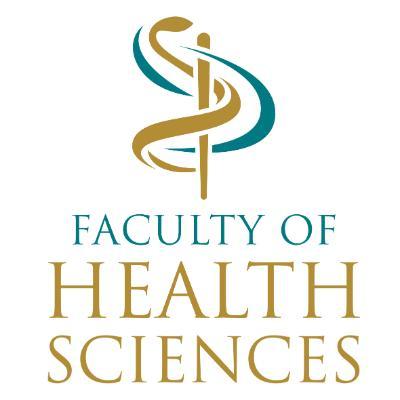HEALTH FUNDING IN AFRICA: NAVIGATING CRISIS AND OPPORTUNITY
- FHS Communications
The Changing Map: Global Health on Shifting Sands
As global health systems grapple with shifting political priorities, economic volatility, and the aftermath of the COVID-19 pandemic, Africa finds itself at a critical juncture. The 2025 Botlhale Orenstein Lecture titled ‘The Changing Map: Global Health on Shifting Sands’, delivered by Professor Helen Rees, painted a sobering yet hopeful picture of the continent’s health funding landscape.
A Global Meltdown in Health Aid
One of the most alarming trends is the sharp decline in Official Development Assistance (ODA) for health. Traditional donors such as USAID, PEPFAR, and the EU have significantly reduced their contributions.
Sub-Saharan Africa was the largest recipient of US health aid in 2024, to which the United States of America contributed 70% of its HIV/AIDS response. This, Professor Rees said, was mainly channelled to the mother-to-child transmission programme and providing HIV treatment to the infected.
In her talk, she highlighted that it is predicted that USAID cuts between 2025 and 2030 can be catastrophic. “You would get potentially another 14 million additional deaths globally and another 4.5 million deaths amongst children”, she explained, highlighting that children under five years old are particularly at risk.
The World Health Organization (WHO) is also facing a 21% budget cut, threatening essential programmes in pandemic preparedness, emergency response, and disease eradication—particularly in Africa, where over $150 million in funding has been lost.
Africa’s Fragile Health Infrastructure
Professor Rees also raised concerns that Africa remains heavily dependent on external health products. Currently, the continent imports 99% of its vaccines, representing only 12 million locally manufactured doses, which serves less than 1% of the population., a far cry from the ambitious vaccine production target for Africa. The deep inequities in access to and production of vaccines and diagnostics was exposed during the COVID-19 pandemic, .
which has catalysed efforts to strengthen regional institutions. In this regard, the Africa Centres for Disease Control and Prevention (CDC)is expanding its role in epidemic intelligence, emergency operations, and vaccine procurement.
Although a good start, she says, legally binding International Health Regulations are needed to enforce ethical obligations in future pandemics. “…they create definitions and rules for countries to prevent, detect, respond to, control and communicate on what are called public health emergencies of international concern,” she explained.
Innovative Financing: A Mixed Picture
Global health financing is facing serious challenges that are exacerbated by key institutions, such as the Pandemic Fund and the African Development Bank, which rely on voluntary contributions, thereby causing funding uncertainties.
Professor Rees says that these contradictions create a troubling contradiction: while global leaders have agreed to a Pandemic Treaty to strengthen preparedness, they are failing to adequately fund the mechanisms needed to implement it.
“It was estimated that over 50% of low-income countries are at high risk of a debt crisis…Africa, on average, is spending over 50% [of its budget] just servicing those loans. So it's all a bit grim on the finance side,” she adds.
She suggests African countries reduce aid dependency by adopting innovative health financing—like taxing sugar and tobacco, swapping debt for health spending, and blending public, private, and philanthropic funds.
Prof Rees emphasised that Africa can achieve far more by pooling regional financing, forming alliances on mutually beneficial causes to improve procurement and reduce costs. She adds “If you get a lot of African countries to work together to buy, say, a vaccine, you can beat the prices down because of volume guarantees. And then there are innovations such as volume and procurement guarantees and what's called advance market commitments”. For instance, organisations such as Gavi, the Vaccine Alliance, are ensuring a marketplace for the private sector to produce health products that are primarily needed by low-income countries.
Leapfrogging with Technology and Research
Professor Rees says South Africa needs a more robustly funded national research ecosystem that integrates national and regional priorities into the health system. “We should focus on leapfrogging technologies and interventions that we don't have to do everything from the letter A. We should have research that can pivot quickly to emergency research when needed,” she explains.
She adds that embracing AI-driven innovations can help the continent to overcome resource constraints, pointing to opportunities in AI-powered diagnostics, predictive analytics for disease surveillance and outbreak detection as well as imaging tools for TB, malaria, and cervical cancer.
A Moment of Reckoning and Renewal
While the global health funding landscape is fraught with challenges, Africa has an opportunity to reimagine its health systems, mobilise domestic resources, and leverage innovation to build resilience.
In her commentary on the lecture, Precious Matsotso, Director of Wits University’s Health Regulatory Science Platform and co-chair of the Intergovernmental Negotiating Body that developed the WHO Pandemic Agreement, echoed that there is a need for equitable access to health and benefits sharing.
Speaking on the role of the pandemic agreement and its implications for health funding in low-income and developing countries, Matsotso emphasised the need for coordinating financing mechanisms and early-stage multiple funding arrangements to ensure the agreement is effective.
“We are hoping that it [the financing framework] will help provide support not only for the implementation of the pandemic agreement, but also to create a proper, robust health architecture,” she added.


